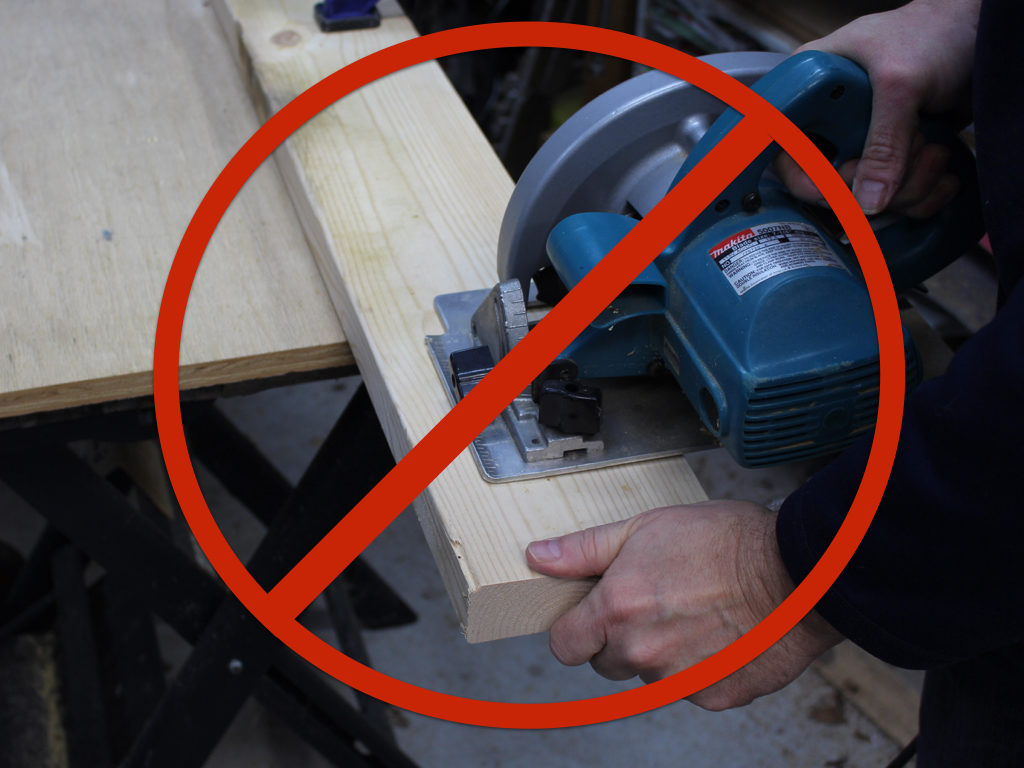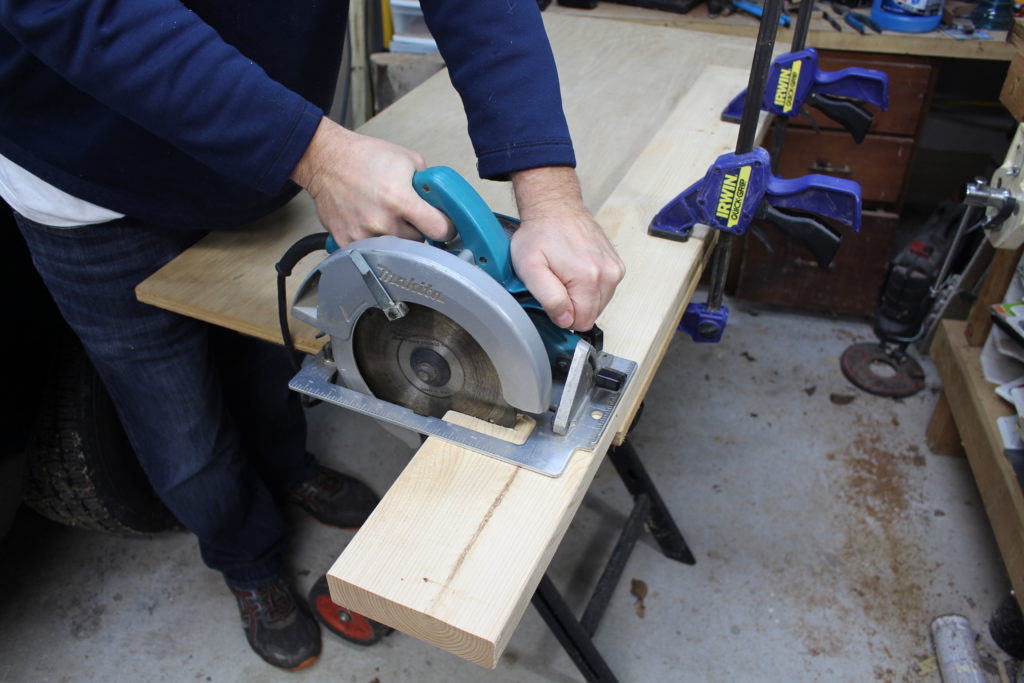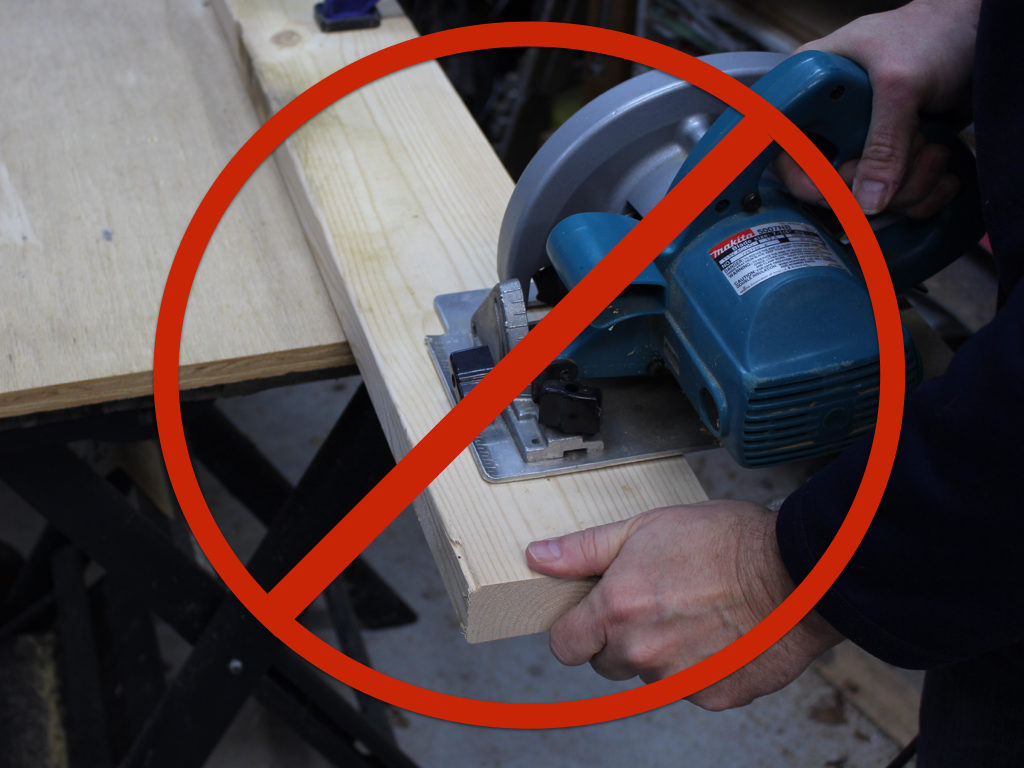Have you ever wondered why your circular saw kicks back at the end of a cut? It can be frustrating and potentially dangerous. But fear not, because in this article, we’re going to explore the reasons behind this issue and share some tips on how to prevent it.
You know when you’re trying to make a precise cut with your circular saw, and suddenly it jerks back uncontrollably? That’s what we call kickback, and it happens for a few different reasons. Understanding these reasons is the first step in avoiding kickback and ensuring a safer woodworking experience.
So, what causes this kickback? Well, it could be due to a misaligned blade, excessive saw speed, or even improper technique. But don’t worry, we’ve got you covered! In the next sections, we’ll take a closer look at each of these factors and give you some practical advice to keep your cuts smooth and kickback-free. Let’s dive in!

Why Does My Circular Saw Kickback at the End of a Cut?
If you’ve ever used a circular saw, you may have experienced a sudden jolt or kickback at the end of a cut. This can be both startling and dangerous. Understanding why this happens and how to prevent it is essential for safe and effective woodworking. In this article, we will delve into the reasons behind circular saw kickback and provide some valuable tips to help you minimize the risk and ensure a smooth, controlled cutting experience.
How Does a Circular Saw Work?
Before we explore the reasons behind circular saw kickback, it’s important to understand how this powerful tool operates. A circular saw consists of a motor, a spinning circular blade with sharp teeth, and a base that supports the wood being cut. The motor drives the blade, causing it to rotate rapidly. When you push the saw forward along a straight line, the teeth of the blade slice through the wood, creating a clean and precise cut. However, if not used correctly, the saw can experience kickback.
Improper Blade Installation
One of the main causes of circular saw kickback is using an improperly installed blade. Before using your saw, ensure that the blade is securely tightened and aligned with the blade guard. If the blade is loose or misaligned, it can wobble during operation, causing the saw to kick back at the end of a cut. Take the time to carefully install and check the blade before each use to minimize the risk of kickback.
Faulty blade design can also contribute to kickback. Blades with large gaps between the teeth, known as a large kerf, are more prone to kickback. This is because larger gaps allow for a greater amount of material to be removed at once, increasing the chance of the blade getting caught and causing kickback. Choosing a blade with a smaller kerf can help reduce the risk of kickback.
Blade Maintenance and Sharpness
In addition to proper installation, regular maintenance and blade sharpness are crucial for preventing kickback. Dull blades require more force to cut through the wood, which can increase the likelihood of kickback. Be sure to keep your blades sharp and clean, removing any pitch or resin buildup that can impede cutting performance. Regularly inspect the blade for any signs of damage or wear. If you notice any chips, cracks, or missing teeth, replace the blade immediately to avoid kickback.
Inadequate Support or Improper Technique
Kickback can also occur due to inadequate support or improper cutting technique. When using a circular saw, it’s important to properly secure the workpiece to prevent it from shifting or moving during the cut. Unstable or improperly supported wood can cause the blade to bind, resulting in kickback. Use clamps or supports to hold the wood firmly in place and ensure that it is balanced and level before making your cut.
Your cutting technique also plays a significant role in minimizing the risk of kickback. Avoid applying excessive force or pushing the saw too quickly through the wood. Instead, let the saw do the work and maintain a steady and controlled pace. Push the saw forward smoothly, allowing the teeth to cut gradually through the material. This steady and measured approach will not only reduce the chances of kickback but also result in cleaner and more accurate cuts.
Tips for Preventing Circular Saw Kickback
Now that we’ve explored the reasons behind circular saw kickback, let’s discuss some effective tips to help you prevent this issue and ensure safe and efficient cutting:
1. Use the Right Blade:
Choose a high-quality blade that is appropriate for the type of material you are cutting. Different blades are designed for different purposes, such as ripping or cross-cutting. Using the right blade will improve cutting performance and reduce the risk of kickback.
2. Check Blade Alignment:
Before each use, ensure that the blade is properly aligned with the blade guard and tightened securely. Misalignment can lead to wobbling and kickback. Make it a habit to check the blade alignment regularly to minimize the risk.
3. Maintain Sharp Blades:
Regularly sharpen and clean your blades to ensure optimal cutting performance. Dull blades can increase the chance of kickback, so inspect them regularly for any signs of damage or wear.
4. Secure the Workpiece:
Always use clamps or supports to secure the workpiece firmly in place. This will prevent the wood from shifting or moving during the cut, reducing the risk of kickback.
5. Use Proper Cutting Technique:
Adopt a steady and controlled cutting technique. Avoid applying excessive force or moving the saw too quickly through the wood. Let the saw do the work and maintain a smooth and measured pace to minimize the chances of kickback.
6. Wear Safety Gear:
Always wear appropriate safety gear, including safety glasses, ear protection, and gloves. Kickback can be unpredictable, and wearing protective equipment will help minimize the risk of injury.
7. Seek Professional Advice:
If you’re unsure about proper circular saw operation or need guidance on preventing kickback, don’t hesitate to seek advice from a professional or experienced woodworker. They can provide valuable tips and techniques to enhance your safety and cutting skills.
By following these tips and understanding the causes of circular saw kickback, you can minimize the risk and enjoy safe and efficient woodworking. Remember, safety should always be the top priority when using power tools, and taking the necessary precautions will lead to successful and enjoyable projects.
Key Takeaways: Why Does My Circular Saw Kickback at the End of a Cut?
- A circular saw can kickback at the end of a cut due to various factors.
- Kickback can happen if the saw blade binds or pinches the material being cut.
- Using a dull or inappropriate blade can increase the chances of kickback.
- Improper technique, such as pushing the saw too hard or not maintaining a firm grip, can also lead to kickback.
- Using a circular saw with safety features, like a riving knife or anti-kickback pawls, can help prevent kickback accidents.
Frequently Asked Questions:
When using a circular saw, you may experience kickback at the end of a cut. This can be dangerous and needs to be addressed. Here are some common questions and answers about why circular saws kickback at the end of a cut.
Why does my circular saw kickback at the end of a cut?
Circular saw kickback occurs when the blade gets pinched or bound in the wood, causing the saw to jerk back towards the user. The main reasons for kickback at the end of a cut are improper technique, dull or incorrect blade, and cutting through a knot or nail. It’s essential to understand and address these factors to prevent kickback.
When using a circular saw, always maintain a firm grip on the saw with both hands and keep your body positioned safely behind the saw’s line of action. Additionally, make sure you’re using the correct type and size of blade for the material you’re cutting. Dull or incorrect blades can increase the chances of kickback. Lastly, be cautious when cutting through knots or nails, as they can cause the blade to bind and result in kickback.
How can I prevent kickback when using a circular saw?
To prevent kickback when using a circular saw, follow these safety precautions. First, use a rip fence or guide to ensure straight cuts and prevent the wood from pinching the blade. Next, maintain a balanced stance and a firm grip on the saw with both hands. Keep your body positioned safely behind the saw’s line of action to avoid potential kickback injuries. It’s also crucial to use a sharp and appropriate blade for the material being cut. Finally, take your time and avoid cutting through knots, nails, or other potential obstructions in the wood.
What should I do if my circular saw kicks back?
If your circular saw kicks back, it’s essential to stay calm and follow these steps. Release the trigger immediately to stop the blade. Firmly hold the saw with both hands to maintain control. Step back from the saw to create a safe distance. Check yourself for injuries and seek medical attention if needed. Next, assess the cause of the kickback, which could be due to technique, blade, or material factors as mentioned earlier. Make any necessary adjustments or changes before continuing to use the saw. Remember, always prioritize safety and consult a professional if you have any concerns.
Can kickback be caused by using the wrong blade?
Yes, using the wrong blade can contribute to kickback when using a circular saw. Different blades are designed for specific materials and types of cuts. Using a blade that is not suited for the material you are cutting can increase the chances of kickback. For example, using a cross-cutting blade for ripping a board may cause it to bind and kick back. Always check the manufacturer’s recommendations for the correct blade to use with different materials and cutting techniques to minimize the risk of kickback.
Is kickback more likely when cutting certain types of wood?
While kickback can happen while cutting any type of wood, certain factors can increase the likelihood. For example, knotty or warped wood can cause the blade to bind and kick back. Additionally, cutting through wood that contains hidden nails or screws can also lead to kickback. It is essential to be aware of these factors and exercise caution when working with challenging materials. Always inspect the wood for any potential obstacles and take extra care to avoid kickback.

How to prevent circular saw from kickback
Summary
When your circular saw kicks back at the end of a cut, it can be dangerous and frustrating. Kickback happens when the saw blade gets stuck or binds in the wood, causing it to forcefully jerk back towards you. This can happen due to various reasons, such as using a dull or improper blade, having the wrong cutting technique, or encountering a knot in the wood. To prevent kickback, it’s important to use a sharp and appropriate blade, maintain a firm grip on the saw, follow the right cutting technique, and be aware of potential hazards like knots in the wood.
Remember, safety should always be a priority when using power tools like circular saws. By being cautious and taking necessary precautions, you can ensure a smooth and safe cutting experience. Happy sawing!
